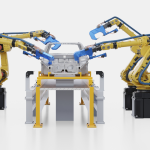Survey highlights growing reliance on mathematical optimization across industries.
The adoption of mathematical optimization is accelerating across industries, with organizations increasingly relying on advanced analytics to drive decision-making and efficiency, according to Gurobi Optimization, LLC’s annual State of Mathematical Optimization Report.
Optimization Becomes Mission-Critical
Based on responses from 440 commercial Gurobi users, the 2024 report highlights the expanding role of optimization in strategic planning and operational problem-solving. Notably, 93% of respondents said optimization is either “gaining traction” or “remaining steady” among decision-makers, emphasizing its growing influence on business operations.
Nearly all respondents (98%) reported that their organization’s operations research teams were either expanding or maintaining their current size, marking a 5% increase from the previous year. Additionally, 84% indicated that mathematical optimization is now considered “mission-critical” to their organization’s success.
Integration with AI and Supply Chain Planning
The report also underscores the synergy between optimization and machine learning, with 81% of organizations incorporating optimization techniques into AI-driven projects. This integration is particularly evident in supply chain planning, where 41% of respondents leverage optimization for demand forecasting, inventory management, and logistics efficiency.
Cross-functional collaboration is also on the rise, with 55% of respondents working closely with data science teams on a daily or weekly basis, reflecting an increasing overlap between optimization and data analytics.
Competitive Differentiation Through Optimization
As organizations grapple with supply chain disruptions, labor shortages, and fluctuating demand, optimization is no longer just a tool—it’s a necessity. The report signals a shift where businesses that fail to integrate mathematical optimization risk losing ground to more agile competitors. Companies investing in AI-driven analytics, scenario modeling, and automation will be best positioned to mitigate risks, streamline operations, and drive profitability. With real-time decision-making becoming a cornerstone of modern business strategy, the integration of optimization across industries is set to become a defining factor in operational excellence.







